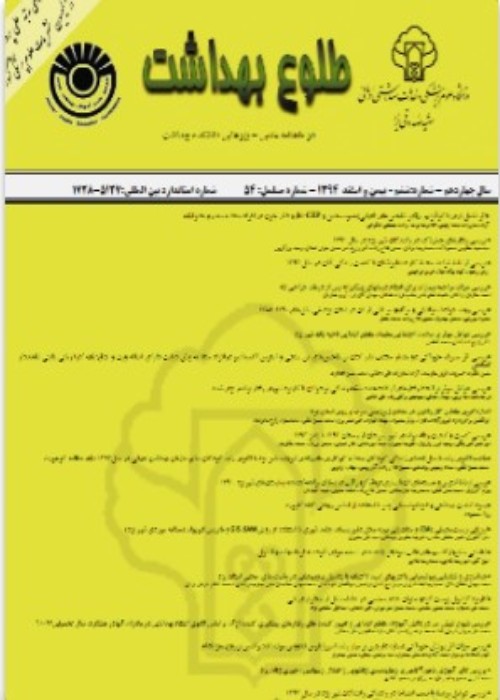Impact of Educational Intervention on Seat Belt Use among Drivers Based on Health Belief Model
Author(s):
Abstract:
Background
Traffic accidents have the highest mortality rate in Iran and one of the main causes of deaths (63%) in traffic accidents is unused seat belt. There are Strong evidences about the effectiveness of using safety belts in reducing the severity of traffic accidents consequences. Providing theoretical based training programs, is the main focus in health education. In this study, the effectiveness of a health belief model based educational program on using seat belt by drivers has been investigated. Methods
In the quasi-experimental study, among health care workers in Ahwaz,153 drivers who owned cars were participated. The participants were divided in two groups, personnel of East Health Center (80 cases) and West Health Center (73 cases). They were randomly selected for intervention and control groups respectively and followed up for two months. After the diagnostic evaluation, educational programs about the use of safety belts were conducted and then post test was done. In both pre- and post test, data were collected via a researcher designed self administered questionnaire based on HBM, which its validity assessed by experts panel and for assessing its reliability Cranach alpha coefficients were calculated in a pilot study. Data were analyzed by appropriate statistical methods using SPSS-17. Results
Background and demographic variables of both groups were similar and it is found that before interventions, two groups have no statistically significant differences in their model constructs scores. But after the training program, scores for health belief model constructs and behavior among intervention group unlike the control group, significantly increased (P< 0.05). A significant relationship between using educational program and the cues to action constructs were observed in both groups. Discussion
The results indicate promote health belief model and behavior of structures in the use of safety belts after completing the training program is among the intervention group and the requirement to provide training based on health belief model indicate.Keywords:
Language:
Persian
Published:
Tolooe Behdasht, Volume:11 Issue: 3, 2013
Page:
45
magiran.com/p1095870
دانلود و مطالعه متن این مقاله با یکی از روشهای زیر امکان پذیر است:
اشتراک شخصی
با عضویت و پرداخت آنلاین حق اشتراک یکساله به مبلغ 1,390,000ريال میتوانید 70 عنوان مطلب دانلود کنید!
اشتراک سازمانی
به کتابخانه دانشگاه یا محل کار خود پیشنهاد کنید تا اشتراک سازمانی این پایگاه را برای دسترسی نامحدود همه کاربران به متن مطالب تهیه نمایند!
توجه!
- حق عضویت دریافتی صرف حمایت از نشریات عضو و نگهداری، تکمیل و توسعه مگیران میشود.
- پرداخت حق اشتراک و دانلود مقالات اجازه بازنشر آن در سایر رسانههای چاپی و دیجیتال را به کاربر نمیدهد.
In order to view content subscription is required
Personal subscription
Subscribe magiran.com for 70 € euros via PayPal and download 70 articles during a year.
Organization subscription
Please contact us to subscribe your university or library for unlimited access!


